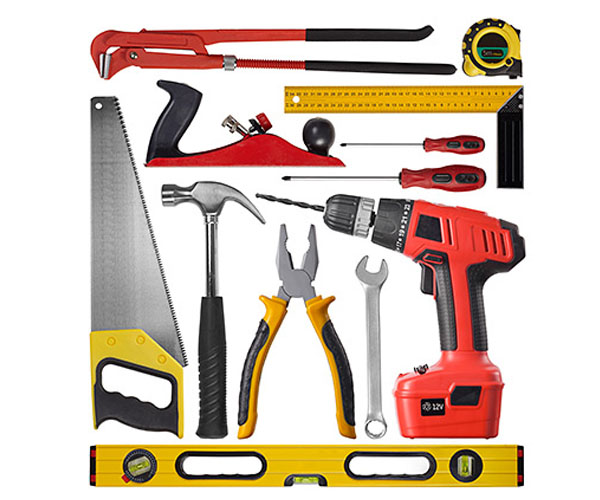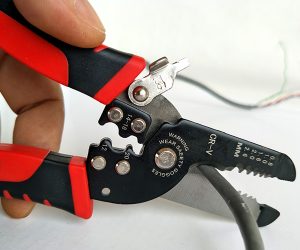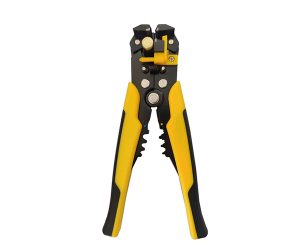Operating tools in wet conditions can lead to serious consequences, both in terms of safety and tool longevity. Whether you’re working outdoors or in a damp environment, using the wrong tools in wet conditions can result in accidents, electrical malfunctions, and tool damage. This article provides an in-depth guide on which tools should never be operated in wet conditions, focusing on both hand tools and power tools. By understanding the risks and learning how to choose the right tools for these environments, you can work safely and ensure your tools last longer. With a thorough look at the specific risks associated with hand tools and power tools, this guide will help you make informed decisions about tool use in wet conditions.
The Risks of Using Tools in Wet Conditions
Working in wet conditions introduces several risks that can significantly affect the safety of the user and the performance of the tools. When tools are exposed to moisture, the risk of electrical hazards increases, especially with power tools. Water is an excellent conductor of electricity, and when it comes into contact with exposed electrical components, it can lead to short circuits, electric shocks, or even electrocution. Additionally, the moisture can cause irreversible damage to the internal components of the tools. For example, metal parts exposed to water can corrode or rust, leading to reduced functionality and a shorter lifespan for the tool. Personal safety is another critical consideration. Wet surfaces increase the likelihood of slips, falls, and accidents while operating heavy machinery or even simple hand tools. In extreme cases, using tools in wet conditions without proper precautions can result in severe injuries or even fatalities.
Before using any tools in wet conditions, it’s essential to assess the environment for potential hazards and consider the tools’ materials and electrical components. You should never underestimate the power of moisture to cause both immediate and long-term damage to your tools. Taking the time to evaluate the risks and use appropriate safety measures can prevent unnecessary accidents and extend the life of your tools.
Types of Tools: Hand Tools vs. Power Tools
When considering the safety and reliability of tools in wet conditions, it’s crucial to understand the differences between hand tools and power tools. Hand tools are simple, non-electric devices that rely solely on human effort to perform tasks. Common examples include hammers, wrenches, screwdrivers, and pliers. These tools are generally less dangerous when exposed to moisture since they don’t have electrical components. However, their metal parts are still vulnerable to rust and corrosion when exposed to water, which can reduce their effectiveness and safety. Some hand tools also have wooden or rubberized handles that can deteriorate if subjected to moisture regularly.
On the other hand, power tools are electrically powered and include drills, saws, grinders, and sanders. These tools come with significant risks when used in wet environments, as the water can easily seep into their electrical systems. The moisture can damage the internal motors, cause short circuits, and even lead to sparks or fires. Even if a power tool is battery-operated, exposure to moisture can cause damage to the batteries and the internal components, affecting the tool’s performance and longevity. Choosing the right tool for the job involves understanding the risks associated with both hand tools and power tools.
Hand Tools That Should Never Be Used in Wet Conditions
While hand tools don’t have electrical components, they’re still vulnerable to the effects of moisture. Using hand tools in wet conditions can lead to rust, deterioration, and damage to the material integrity of the tool. This is particularly true for tools made from metal. For example, hammers and wrenches are commonly exposed to moisture when working outdoors. When the metal comes into contact with water, it can quickly begin to rust, making the tool difficult to grip and less effective. Similarly, screwdrivers and pliers are also susceptible to corrosion. The metal parts, particularly the tips and jaws, can lose their sharpness and grip, making them ineffective for precise work.
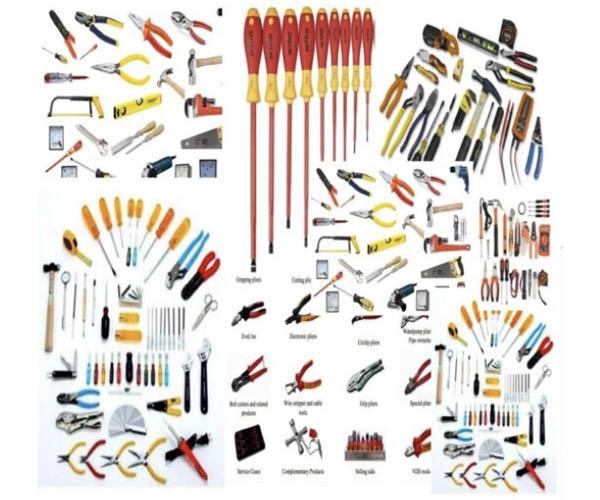
Cutting tools such as saws, shears, and other blades are particularly prone to becoming dull and rusty when exposed to moisture. Wet conditions can also lead to the weakening of the material, causing them to bend, snap, or break under pressure. When working with wet conditions, it’s essential to thoroughly dry hand tools after each use and store them in a dry environment to prevent damage. Regular maintenance, including cleaning and lubrication, can help preserve the integrity of hand tools used in wet conditions.
Power Tools That Should Never Be Used in Wet Conditions
Power tools are far more vulnerable to damage in wet environments due to their electrical components. One of the most dangerous tools to use in wet conditions is an electric drill. Water can easily seep into the motor and cause it to malfunction or short-circuit. If the drill comes into direct contact with water, there is also a risk of electrical shock, making it extremely dangerous for the user. Similarly, circular saws and angle grinders should not be used in wet conditions. Moisture can cause the electrical parts to short-circuit, leading to sparks, fire, or failure of the tool altogether. The motor and wiring inside the saws are also susceptible to rust, which can render the tool ineffective.
Other power tools, such as sandblasters, grinders, and power sanders, can also be significantly impacted by moisture. These tools require a stable electrical current to function correctly, and water can disrupt this process, leading to unreliable performance. Additionally, exposure to water can weaken the motor housing and components, increasing the risk of electrical hazards. When working in wet conditions, always ensure that power tools are equipped with waterproof casings and consider using tools designed specifically for wet or damp environments.
Recognizing When It’s Too Wet for Tool Use
Knowing when it’s too wet to use a tool is an essential skill for any worker who deals with tools regularly. The first sign that it may be too wet to use tools is the presence of standing water. If water has accumulated in your workspace, it’s likely not safe to use power tools or even hand tools that have metal components. Another indicator is the level of humidity. Excess moisture in the air can cause condensation to form on tools, which can lead to rust and internal damage over time. It’s also important to assess the condition of the surfaces you’re working on. Wet floors or slippery workbenches pose a significant hazard, especially when using power tools that require both hands for operation.
Weather-related factors such as rain and snow should also be considered. Even if you’re working outdoors, it’s crucial to check the weather forecast before starting a project that involves power tools. Tools should be protected from precipitation at all costs. If you can’t avoid wet conditions, consider using specialized tools designed for such environments. Always prioritize safety by ensuring that tools are dry, insulated, and properly stored when not in use.
Selecting the Right Tools for Wet Conditions
When working in wet conditions, choosing the right tools is critical to ensuring both safety and effectiveness. First and foremost, select tools made from materials that resist moisture. Rust-resistant metals such as stainless steel and coated materials are ideal for hand tools exposed to water. Look for power tools with waterproof casings or sealed electrical components, as these will prevent water from entering and damaging the internal components. Many tools are now designed with additional safety features, such as insulated handles and non-slip grips, to help users maintain control and avoid accidents in wet conditions.
Customizable options are also available for some tools, allowing users to select specific features, such as sealed motors or waterproof connections, to suit their needs. While it may be tempting to use the same tools in wet conditions as you would in dry environments, investing in moisture-resistant models will ensure better performance and longer tool life. Consider the conditions in which you’ll be working before making a purchase. Tools made for heavy-duty outdoor use or for specialized tasks may be better suited for wet environments than standard models.
How to Protect Power Tools in Wet Environments
Power tools in wet environments require extra care to maintain both functionality and safety. Using protective covers is one of the best ways to shield your power tools from water. Rubber or plastic covers can be draped over tools when they are not in use to prevent moisture from seeping into their internal components. For tools that are used frequently in wet conditions, waterproof cases and tool bags are highly recommended. These cases can protect tools during storage and transportation, ensuring that they stay dry even when exposed to outdoor elements.
After use, drying techniques are essential. Always ensure that your power tools are completely dry before storing them. Wipe down any wet surfaces and inspect electrical components for moisture. When working outdoors in rainy conditions, consider using a portable fan or blower to help dry the tools more effectively. If moisture has penetrated internal components, it’s essential to disassemble the tool and let it dry thoroughly to avoid internal rusting or short-circuiting. Regular inspections of power tools will help you spot potential damage early and keep them in good working order.
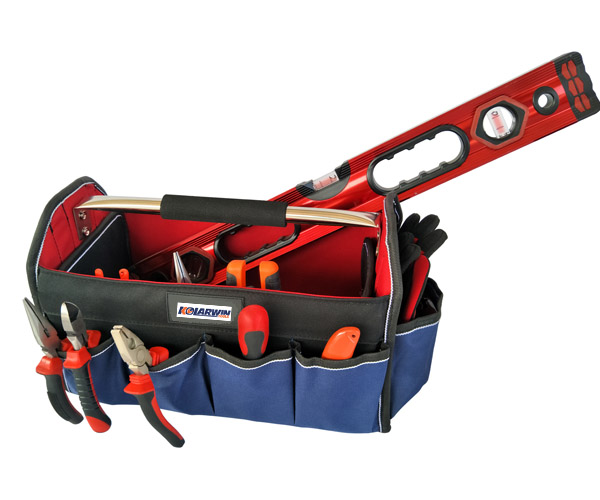
Hand Tools That Are More Suitable for Wet Conditions
Some hand tools are more suited for use in wet conditions due to their construction and materials. Tools made from stainless steel or other rust-resistant materials are a good option for tasks involving water or moisture. Rubberized or plastic-coated handles can provide additional protection against moisture and improve grip, even in wet environments. These features are particularly important for tools that require precision and control, such as screwdrivers, wrenches, and pliers. Stainless steel tools are highly durable and resistant to corrosion, making them ideal for prolonged use in wet environments.
For cutting tools like saws and shears, look for models with coated or stainless steel blades to ensure they maintain sharpness and resist rust. Hand tools with adjustable parts, such as locking pliers or adjustable wrenches, should be carefully maintained to avoid damage from moisture. Regular maintenance of these tools can ensure they remain reliable and effective, even when used in damp or wet conditions. Proper cleaning and lubrication can help protect metal components and prevent rust from forming over time.
Power Tools with Water-Resistant Features
Power tools that are designed for use in wet or damp conditions typically have features that prevent water from reaching sensitive internal components. Cordless power tools are a good option because they reduce the risk of electrocution when exposed to moisture. Battery-operated tools, in particular, are more resilient in wet conditions since they often come with waterproof casings or sealed batteries that prevent water damage. Many modern power tools are equipped with water-resistant seals around the electrical components and motors, making them safer for use in damp or rainy conditions.
When selecting power tools for wet environments, always check for specific safety features like water-resistant housings, sealed motors, and moisture-proof connectors. These features will keep the tool’s electrical systems safe from water exposure, minimizing the risk of electrical damage. Tools designed for wet conditions are generally more durable and reliable, ensuring you can complete your projects without worrying about tool failure or safety hazards. Always choose power tools with these features for peace of mind when working in damp or wet environments.
Essential Safety Precautions for Working in Wet Conditions
When working in wet conditions, taking the necessary safety precautions can prevent serious accidents and ensure you can complete your work safely. Using ground fault circuit interrupters (GFCIs) is one of the most effective ways to protect yourself from electrical shock. These devices will automatically shut off power to the tool if they detect an electrical fault, helping to prevent electrocution. Wearing the proper personal protective equipment (PPE), such as waterproof gloves and slip-resistant footwear, is also critical when working in wet environments. PPE can help you maintain a secure grip on tools and avoid slips or falls that could lead to injuries.
Additionally, establishing a safe work environment is key. Make sure that the work area is clear of puddles and standing water. Use mats or tarps to keep tools dry, and ensure that power tools are kept away from any sources of water. If working outside in heavy rain or snow, take extra precautions to protect electrical tools from moisture exposure. Be mindful of your surroundings and regularly assess the environment to ensure that it remains safe for tool operation.
FAQ
- Can hand tools be safely used in wet conditions?
- Not all hand tools are suitable for wet conditions. Tools like hammers, wrenches, and saws can deteriorate due to rust and loss of grip.
- What is the most important factor when using power tools in wet conditions?
- Always consider the tool’s electrical components. Never use power tools in standing water and ensure they are insulated or waterproof.
- How do I clean power tools after using them in wet conditions?
- Dry them immediately and check for any moisture in the components. Ensure they are fully dried before storing or reusing them.
- Are there specific tools designed for wet or damp conditions?
- Yes, some tools are specifically designed for underwater use or wet environments, such as waterproof drills and rust-resistant hand tools.
- What should I do if my power tool gets wet?
- Unplug it, dry it off immediately, and check for electrical shorts or rust. In some cases, you may need to consult a professional for repairs.
Contact Us for High-Quality OEM Hand Tools
At Kolarwin Tools, we specialize in manufacturing high-quality hand tools, including custom OEM solutions to meet your specific brand requirements. As an experienced factory based in China, we provide a wide range of tools for industries such as car repair, woodworking, DIY projects, and general hand tool usage.
Whether you’re a factory, wholesaler, distributor, or retailer, we can offer reliable, durable, and cost-effective hand tools tailored to your needs. Our products are known for their excellent quality, and we offer robust customization capabilities to ensure our tools align perfectly with your branding and market needs.
Why Choose Kolarwin Tools?
- OEM Capabilities: We can create customized tools with your logo and specifications.
- Quality Assurance: Our products are made with durable materials and undergo strict quality control processes.
- Competitive Pricing: We offer great value without compromising quality.
- Fast and Reliable Shipping: We have established logistics channels to deliver on time to the USA, Australia, Europe, and other markets.
If you’re interested in learning more about our products or have a project in mind, please contact us directly. We are happy to provide quotes, product samples, and answer any questions you may have.

